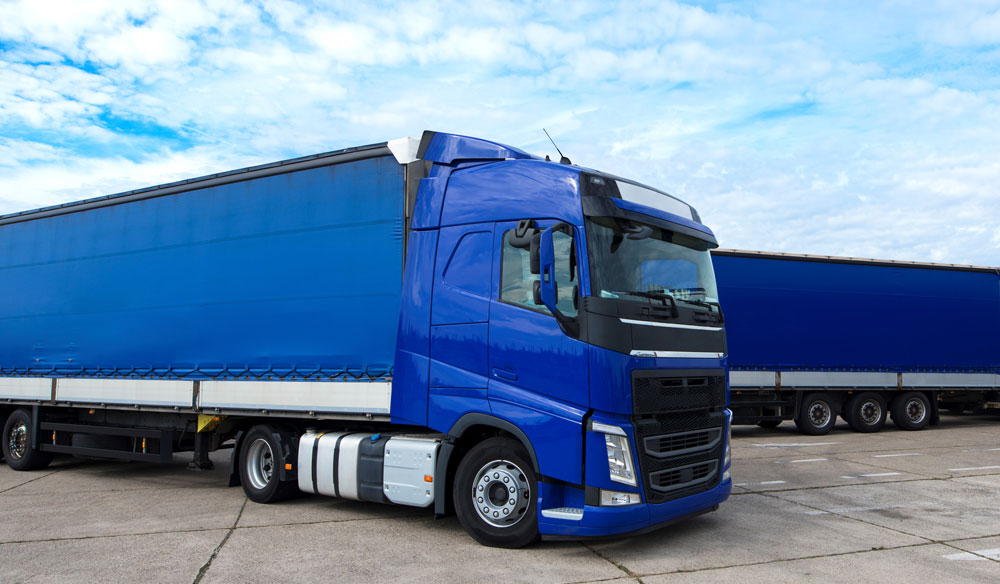300 billion euros. According to the European Automobile Manufacturers Association, at least this amount needs to be invested in fleet and infrastructure to implement the plan of incorporating road freight transport in the EU into the CO2 emissions trading system. For now, the costs are mainly borne by carriers. New road toll rates and a decrease in the number of orders are making the situation in this sector increasingly difficult. Rising business operation costs are forcing company owners in Poland to restructure or suspend their activities. The mood among road carriers is bleak, and without support, the transport industry could soon find itself at a dangerous turning point.
The economic outlook in the transport and warehousing sectors remains negative (-1.5). According to the latest data from the Central Statistical Office (GUS), transport companies report barriers to the development of their activities, primarily due to high business operation costs, as indicated by over 47% of respondents. Entrepreneurs are also hindered by inflation (over 30%), and they view the macroeconomic situation as uncertain (27.6%).
“It’s no surprise, given that for nearly five years, the transport industry, particularly road transport, has been facing both legislative and economic challenges. Currently, the most noticeable issue is low demand, leading to a drop in spot and contract rates in the first quarter of this year. The increase in CO2 emission charges, first introduced by Germany and recently joined by other European countries, also complicates the operation of transport activities. Additionally, driver wages are rising. As a result, operational costs are very high, and fuel surcharges on orders definitely do not ensure a profitable return on investment,” explains Kameliya Vasileva, Chief Commercial Officer at Gopet Trans.
Market Realities in 2024
In the first quarter of this year, both spot and contract rates fell. According to the European Road Freight Rate Index (Upply, Ti, IRU), contract rates decreased to 127.6 points, down 2.6 points quarter-on-quarter. Spot rates dropped to 123.9 points, down 1.1 points quarter-on-quarter. In a broader year-on-year picture, these numbers look different—spot rates fell by 8.2 points, and contract rates by 1 point. What does this mean? Nothing but low demand, which, combined with high operational costs for transport companies such as vehicle maintenance, insurance, service, and tire replacement, is causing road carriers to struggle. Rising employee wages, coupled with the fact that freight rates in Europe have not significantly changed to match the costs borne by carriers, also negatively affect the industry’s sentiment.
Transport company owners must currently navigate many challenges. One of these is the gradual implementation of EU Directive 2022/362, which amends the directive on eurovignettes. According to the IRU, new road tolls in Germany have increased the cost of freight transport by 83%, in Hungary by 40%, in the Czech Republic by 13%, and in Austria by 7.4%.
“Let’s note that so far, all increases in transport operation costs in Poland are borne by carriers. The transport industry is affected by a decline in production and the number of orders. Additionally, carriers choose routes with lower tolls. It seems that the significance of Polish companies in Europe is so substantial that the scenario of them being pushed out of European markets is very unlikely. Nonetheless, the difficult economic environment means there is a percentage of entrepreneurs who, for example, withdraw part of their fleet—selling vehicles, keeping one or two that have guaranteed contracts, and trying to wait out this uncertain time. Unfortunately, there are also those who are already on the brink of bankruptcy,” says Vasileva.
Rapid Acceleration of Negative Trends
More than a billion zlotys of debt is attributed to road freight transport. Companies are going bankrupt, and this is evident in the numbers. According to data from GUS and COIG, among all the companies that declared bankruptcy in the first quarter of 2024, 6% were transport companies. Additionally, 15% of enterprises that initiated restructuring proceedings were carriers. It is also noteworthy that in the first three months of this year, 3% fewer entities providing transport services were registered compared to the same period last year. The industry has been sounding the alarm about its difficult situation for a long time. What next?
Will Transport Shift into a Higher Gear?
In 2024, a 0.4% year-on-year increase in road transport volume in the EU is forecasted (up from -1.1% in 2023). These are cautious predictions from IRU, influenced by factors such as real wage growth, slowing inflation, and a strong labor market, which experts believe supports the revival of consumption. Meanwhile, Transport Intelligence forecasts a 1.1% year-on-year increase in the market size for road transport revenues. Will these scenarios come true?
“We hope that the second half of the year will indeed bring an increase in rates. There is already a slight economic revival, and freight prices have risen on some routes in April and May. Therefore, we are anticipating more favourable conditions in transport, although there are still problems to be solved. For example, the industry, which is already bearing the costs of introducing CO2 emission surcharges, has no alternative. Systemic changes are needed, such as a subsidy program for carriers, so that in the coming years, they have a chance to adapt their fleets to zero-emission requirements or keep up with the growing role of intermodal transport,” summarizes Kameliya Vasileva from Gopet Trans.
This is confirmed by the calculations of the ACEA organization, which warns that achieving the goals of including road freight transport in the EU’s emissions trading system requires an investment of at least 300 billion euros in fleet, charging, and refuelling infrastructure by 2023.
Meanwhile, in the first quarter of this year, there was a 29.5% increase in the sales of electrically powered trucks, although they still account for only 2% of the market share of such vehicles. The country with the highest percentage of electric truck registrations is Germany. Will we be able to keep up with our western neighbour without adequate support?

